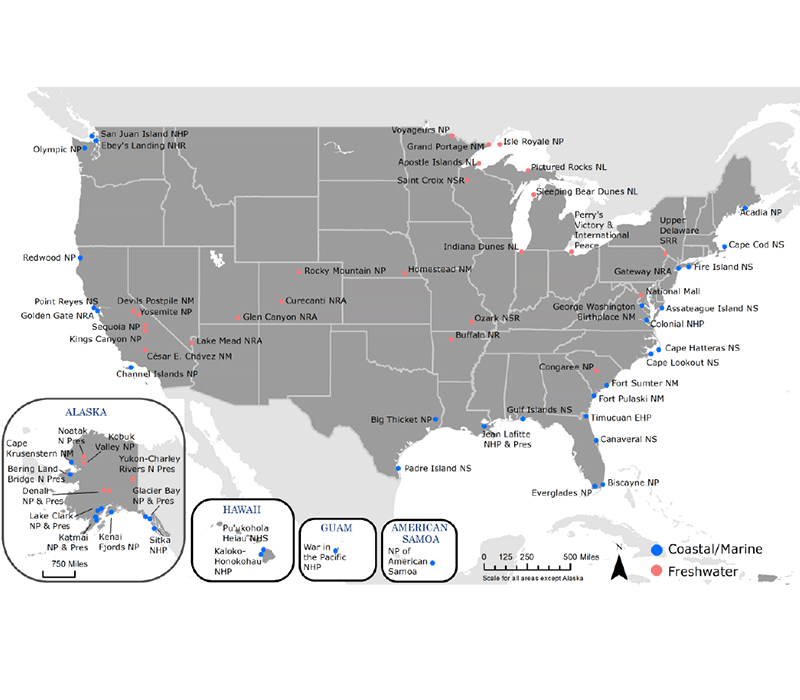
USGS Investigators: Jennifer Graham
NPS Investigators: Jamie Kilgo
| 2021 | 2022 | 2023 |
|---|---|---|
| $100,000 | $100,000 | $100,000 |
NPS Park: Acadia NP , Apostle Islands NL , Buffalo NR , Cape Cod NS , Canaveral NS , Curecanti NRA , Fire Island NS , Isle Royale NP , Lake Mead NRA , National Mall & Memorial Parks , Olympic NP , Padre Island NS , Perrys Victory and International Peace Mem , Saint Croix NSR , Sitka NHP , Sleeping Bear Dunes NL , Voyageurs NP , Zion NP
USGS Center: New York Water Science Center
States: AK AR AZ CO DC FL MA ME MI MN NV NY OH TX UT WA WI
In 2018, National Park Service (NPS) Regional Natural Resource Chiefs identified harmful algal blooms (HABs) as a priority management issue in marine and Great Lakes parks. HABs can decrease water clarity, hinder visitor enjoyment, obstruct water treatment systems, and clog boat motors. However, the greatest concerns are that (1) blooms can produce toxins that can affect the health of a wide range of aquatic and terrestrial organisms, including humans (Backer and others, 2015; Backer & Mcgillicuddy, 2006), and (2) researchers have an incomplete understanding of the environmental fate and transport of these toxins.
This proposal aims to address the following critical management needs identified by parks nationwide:
